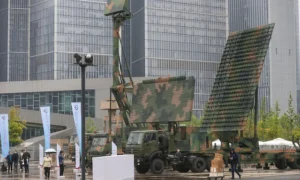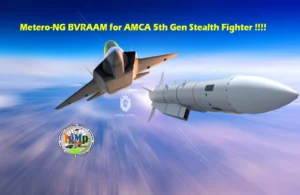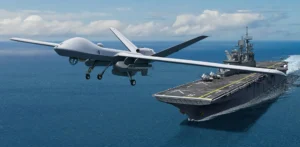Source : Swarajya
 |
| Pralay Short Range Ballistic Missile (SRBM) during testing last year (File Photo) |
Indian armed forces could soon get a go-ahead to acquire the Pralay surface-to-surface short-range ballistic missile (SRBM).
If the news, which has not been confirmed by the three services or the Ministry of Defence, is accurate, this could prove to be a major step towards India’s ambition to develop and deploy a rocket force.
In September 2021, the Late Chief of Defence Staff, General Bipin Rawat, revealed that India was “looking at creating a rocket force”.
Pralay Missile
A tactical missile, Pralay, has a stated range of 150-500 kilometres and carries warheads ranging from 350 to 700 kilograms.
Evolved from India’s K-series of Submarine Launched Ballistic Missiles or SLBMs, the first known tests of the Pralay missile were conducted on two consecutive days in December 2021.
The satellite imagery of the test shows that Pralay is a canisterised road-mobile system. Canisterisation can significantly enhance the mobility of a tactical missile system by reducing the time and resources required to prepare and launch the missile.
The mobility of a tactical missile system is important because it allows the system to be moved to different locations as needed in order to respond to evolving threats.
But more importantly, in one of the two tests conducted last December, the missile was launched on a quasi-ballistic trajectory.
In a quasi-ballistic trajectory, the missile follows a relatively lower (though largely ballistic) path than a ballistic missile would, and has the ability to perform manoeuvres in flight.
When moving in a lower trajectory than a ballistic missile, a quasi-ballistic missile is able to maintain a higher speed, which gives its target less time to react to the incoming threat. It significantly increases the chances of the missile defeating enemy’s missile defence systems.
The Defence Ministry has referred to the missile as a “conventional Surface-to-Surface missile” in an effort to distinguish it from the Agni series of missiles, which have the capability to carry both conventional or nuclear warheads.
The use of Agni-I and Agni-II missiles with conventional payloads in a conflict situation could potentially lead to misunderstandings and escalation, as the opposing side would have no way of knowing whether the warhead on the missile is nuclear or conventional.
By classifying the missile as conventional, the decision to use it can be delegated to local commanders, as is the case with other tactical weapons systems.
Why India Needs A Missile Force
The People’s Liberation Army Rocket Force (PLARF), formerly known as the Second Artillery Force, has the world’s largest ground-based conventional missile force.
Its evolution from the Second Artillery Force of the PLA to PLARF, which makes it a service like the army, navy and air force, and the 33 per cent increase in size in three years between 2017 and 2019, indicates China’s increased reliance on the rocket force.
India has ground-launched missiles to respond to such an attack, but the options are severely limited when compared to China and under the command of different services. Both the Indian Army and the Air Force have ground-based BrahMos missiles, but the lack of theaterisation and jointness means they can’t be used optimally.
An integrated rocket force would not only be a deterrent to China’s PLARF, but it would also bring such assets under a singular architecture and doctrine.
Moreover, it would help achieve the most efficient economy of scale and concentration of mass firepower.
BrahMos, which now has a relatively longer range than before, costs upwards of Rs 34 crore a piece. It will be reserved for a limited number of high-value targets.
Pralay, a much cheaper ballistic missile, would provide mass to the rocket force and allow it to target Chinese force concentrations along the Line of Actual Control and dual-use infrastructure in Tibet.
However, the rocket forces would still need a cheaper ground-launched cruise missile, which remains a crucial missing link in India’s missile arsenal, apart from long-range conventional ballistic missiles to strike targets deep inside China.








